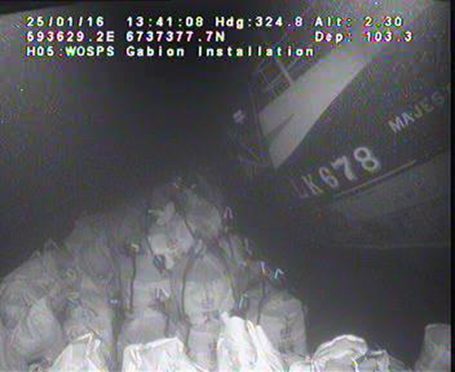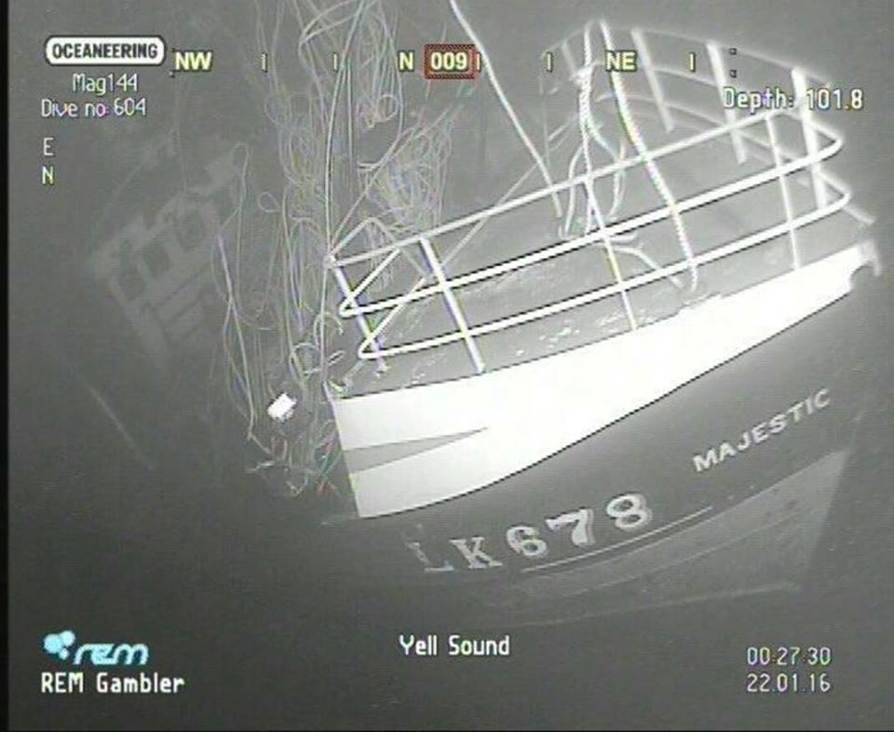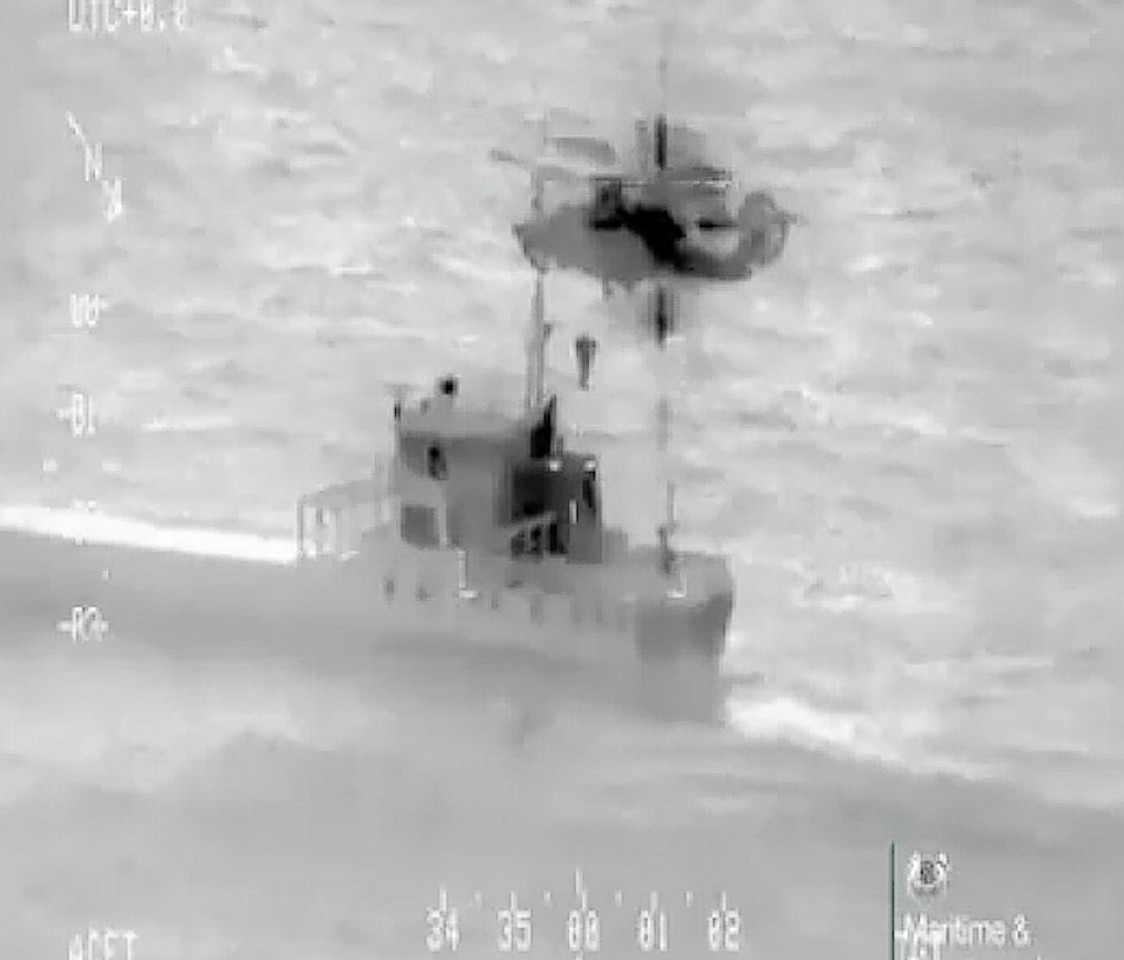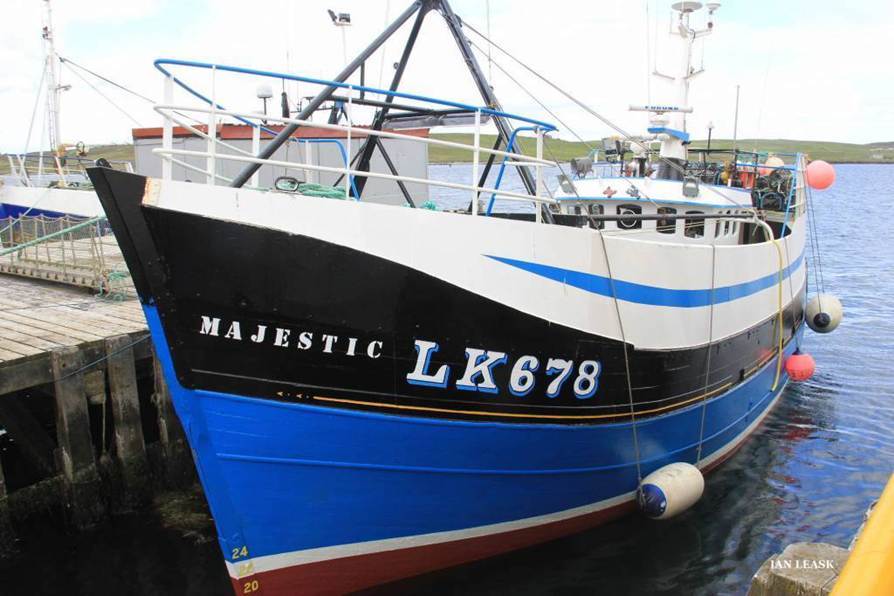A fishing boat sank within 7ft of a major gas pipeline off Shetland after its crew failed to hear a flood alarm, despite it going off for up to an hour.
The Lerwick-registered creel boat Majestic foundered nearly six miles off Yell on January 21 this year after a flood in its engine room.
British Petroleum (BP) was forced to lay sandbags on the sea floor to prevent the wreck from toppling onto their pipeline, which supplies gas to rigs in the Magnus Field in the North Sea, off the Point of Fethaland.
The crew of the 52ft potter – two brothers from Shetland – escaped into a life-raft shortly after discovering the flood and were later picked up by another fishing boat in the area.
The Marine Accident Investigation Branch (MAIB) has now published its findings into the incident.
They found that the sinking was probably caused by a failure within a seawater system inside the engine room.
The engine room alarms were not heard for up to an hour because both of the crew were working on the deck of the Majestic processing a catch of brown crab.
The wheelhouse was left unattended while this was happening and at about 10am the 34-year-old skipper returned and discovered the bilge alarms sounding.
His brother and crewman, 35, checked the engine room, where he discovered water halfway up the side of the engine casing.
They immediately went to the wheelhouse roof and launched the life-raft and broadcast an a mayday distress call.
Just 20 minutes after the flooding was discovered the coastguard helicopter Rescue 900 arrived in the area, as did fishing vessel Fairway II which took the Majestic’s crew on board.
Over the next four-and-a-half hours the craft drifted toward the Orka Voe gas pipeline to the north.
It was deemed too dangerous to put anybody on board the Majestic to establish a tow and at about 2.40pm the ship rolled onto its side.
It sank about three minutes later into about 330ft of water.
The MAIB report states: “A 500m (1640ft) exclusion zone was established over the site of the Majestic’s wreck and BP deployed a guard vessel to the area.
“A remotely operated vehicle (ROV) survey identified that Majestic had settled on the seabed 2m (6ft 5in) from the gas pipeline; the vessel was heeling towards the pipeline.
“As a precaution the ROV was used to place large sandbags between Majestic and the pipline to prevent the wreck from toppling.”
The specialist investigators from the MAIB have issued a number of recommendations to the crew of the Majestic, including assessing the dangers of leaving the wheelhouse unattended.
They determined from the length of time it took for the Majestic to sink that water ingress was “significantly higher” than usual and “almost certainly caused by a material failure of pipework or a seal on one of the engine room’s seawater systems connected to seawater inlets or discharge overboard valves”.
They said that safety alarms should be heard throughout the vessel if it sounds, though they added that it is important to have a person in the wheelhouse to keep watch.
They also found the crew did not routinely carry out emergency drills which “probably reduced” their “effectiveness” in responding to the flood.]
The MAIB also found that it was “of concern” that the crew did not wear life jackets, either when working on deck or when abandoning their ship.
In the report, the investigators said that the MAIB first recommended the compulsory use of life jackets in 200 but the “culture of the fishing industry has been slow change”.
They added: “A more rapid foundering, stumbling when entering the liferaft or difficulties when deploying the liferaft could easily resulted in one or both of the men ending up in the sea.”



